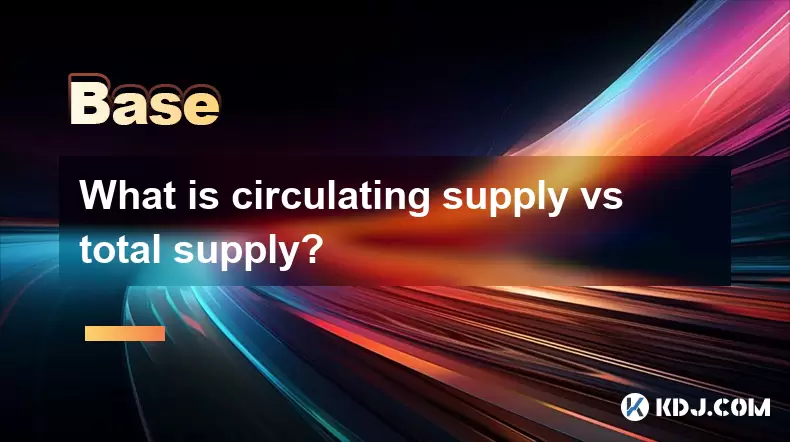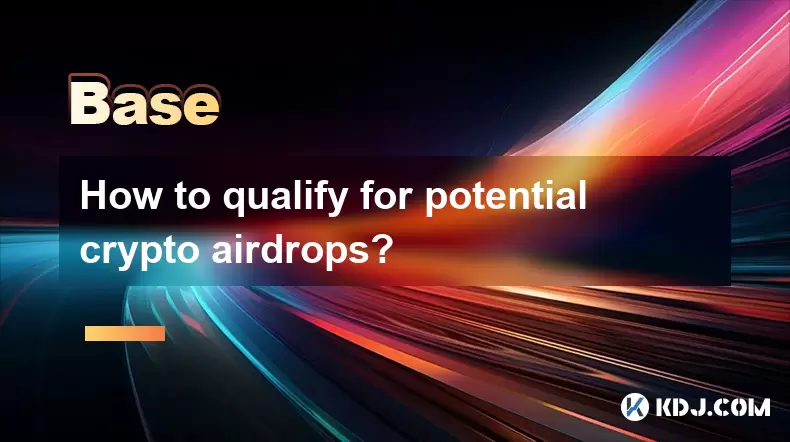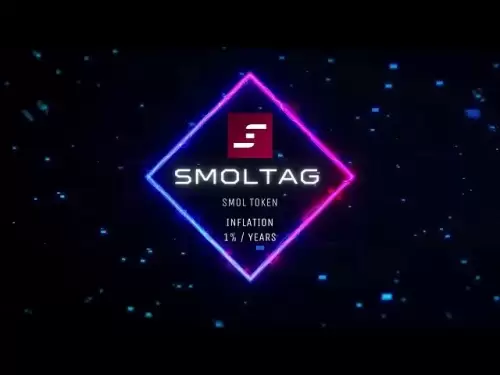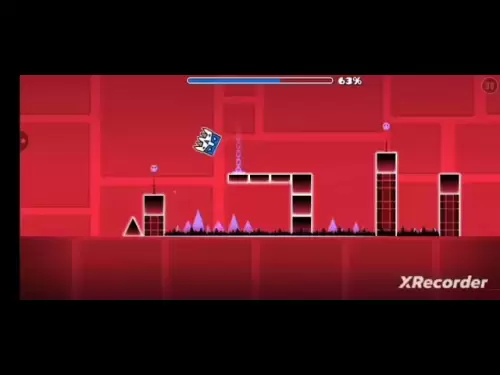-
 Bitcoin
Bitcoin $119000
0.17% -
 Ethereum
Ethereum $3664
-2.12% -
 XRP
XRP $3.229
-7.77% -
 Tether USDt
Tether USDt $1.001
0.02% -
 BNB
BNB $783.2
-1.48% -
 Solana
Solana $191.3
-5.26% -
 USDC
USDC $1.000
0.03% -
 Dogecoin
Dogecoin $0.2450
-7.74% -
 TRON
TRON $0.3115
-1.61% -
 Cardano
Cardano $0.8229
-6.80% -
 Hyperliquid
Hyperliquid $44.17
-2.93% -
 Stellar
Stellar $0.4343
-7.23% -
 Sui
Sui $3.792
-4.09% -
 Chainlink
Chainlink $18.38
-5.73% -
 Hedera
Hedera $0.2491
-7.79% -
 Bitcoin Cash
Bitcoin Cash $518.1
-1.51% -
 Avalanche
Avalanche $24.13
-5.84% -
 Litecoin
Litecoin $113.9
-5.41% -
 UNUS SED LEO
UNUS SED LEO $8.974
-0.21% -
 Shiba Inu
Shiba Inu $0.00001400
-7.98% -
 Toncoin
Toncoin $3.215
-2.09% -
 Ethena USDe
Ethena USDe $1.001
0.03% -
 Polkadot
Polkadot $4.178
-6.84% -
 Uniswap
Uniswap $10.38
-3.05% -
 Monero
Monero $317.8
-1.85% -
 Bitget Token
Bitget Token $4.733
-1.94% -
 Pepe
Pepe $0.00001293
-8.20% -
 Dai
Dai $1.000
0.02% -
 Aave
Aave $292.8
-4.74% -
 Bittensor
Bittensor $430.1
-3.67%
What is circulating supply vs total supply?
"Circulating supply shows tokens actively trading, while total supply includes all created tokens minus burned ones, helping assess a crypto's scarcity and market impact."
Jul 04, 2025 at 04:07 am

Understanding the Difference Between Circulating Supply and Total Supply
In the cryptocurrency space, two terms that often come up when discussing a token's availability are circulating supply and total supply. These metrics help investors and users understand how much of a particular cryptocurrency is available in the market and how much could potentially be released over time.
Circulating supply refers to the number of coins or tokens that are currently available and actively trading on the market. This figure excludes any coins that are locked, reserved, or otherwise not accessible for public trading. For instance, if a project team holds a large portion of tokens in reserve or if some tokens are locked via staking mechanisms, these are not counted as part of the circulating supply.
What Does Total Supply Mean?
The total supply encompasses all the coins or tokens that have been created so far, minus those that have been permanently burned. It includes both the coins that are already circulating and those that are held in reserve by developers, teams, or smart contracts. Unlike circulating supply, total supply gives a broader view of the token’s overall issuance status.
For example, a blockchain project might mint 100 million tokens at launch. If only 70 million are made available to the public immediately while the remaining 30 million are locked for future development incentives or team allocations, then:
- Circulating supply = 70 million
- Total supply = 100 million
It’s important to note that burned tokens—those removed permanently from circulation—are subtracted from the total supply.
How Are These Metrics Used in Market Cap Calculations?
Market capitalization is a key metric used to evaluate the size and value of a cryptocurrency. However, it can be calculated using either the circulating supply or the total supply, depending on the platform or analyst.
Most financial platforms like CoinMarketCap and CoinGecko use circulating supply to calculate market cap because it reflects the actual amount of a token that can influence the market price through buying and selling activity. Using total supply may give an inflated or misleading picture of a token’s true valuation, especially if a large percentage is locked or reserved.
Here’s how the calculation works:
- Market Cap (based on circulating supply) = Current Price × Circulating Supply
- Market Cap (based on total supply) = Current Price × Total Supply
Investors should always check which supply metric a given platform uses before making decisions based on market cap alone.
Why Is the Distinction Important for Investors?
Understanding the difference between circulating supply and total supply is crucial for making informed investment decisions. A project with a low circulating supply but a high total supply may see significant price drops if a large number of new tokens enter the market suddenly—such as during a vesting unlock or team token release.
This distinction also affects scarcity perception. If a token has a capped total supply like Bitcoin (21 million), but its circulating supply is still growing, its scarcity increases over time. On the other hand, a token with an uncapped total supply—like Ethereum post-EIP-1559—may face inflationary pressures unless there’s a deflationary mechanism such as token burning.
Moreover, investors should research whether a token has scheduled unlocks or inflationary rewards. Projects that fail to disclose details about token distribution or future releases can pose risks due to sudden dilution or dumping.
Where Can You Find These Figures?
You can find both circulating supply and total supply metrics on major crypto tracking platforms such as:
- CoinMarketCap: Displays both figures under each cryptocurrency’s overview section.
- CoinGecko: Offers detailed breakdowns including max supply, total supply, and circulating supply.
- Blockchain explorers: Platforms like Etherscan or BscScan allow you to verify token balances and contract details for transparency.
Some projects also publish whitepapers or tokenomics pages on their websites, where they clearly outline the token distribution schedule, initial allocations, and any planned burns or emissions.
Frequently Asked Questions
Can circulating supply ever exceed total supply?
No, circulating supply cannot exceed total supply. Circulating supply is always equal to or less than total supply since it represents only the portion of tokens available for trading.
Are all locked tokens excluded from circulating supply?
Not necessarily. Some platforms may include locked tokens in the circulating supply if they believe those tokens will be released soon or are controlled by decentralized entities. However, most tracking services exclude locked or reserved tokens from the circulating supply.
Is total supply the same as max supply?
No. Total supply refers to the number of tokens created so far (minus burned ones), whereas max supply is the maximum number of tokens that will ever exist for a particular cryptocurrency. Max supply applies mainly to tokens with a hard cap, like Bitcoin.
How does token burning affect these metrics?
Token burning reduces both total supply and circulating supply. When tokens are burned, they are sent to an irretrievable address, effectively removing them from the ecosystem.
Disclaimer:info@kdj.com
The information provided is not trading advice. kdj.com does not assume any responsibility for any investments made based on the information provided in this article. Cryptocurrencies are highly volatile and it is highly recommended that you invest with caution after thorough research!
If you believe that the content used on this website infringes your copyright, please contact us immediately (info@kdj.com) and we will delete it promptly.
- US Government, Bitcoin Reserve, and Sell-Off Rumors: Separating Fact from Fiction
- 2025-07-24 21:10:12
- Stablecoins, Fintech, and the Future in 2025: A New York Minute
- 2025-07-24 20:50:12
- RLUSD Shines as XRP Stabilizes: The Stablecoin Revolution
- 2025-07-24 20:55:13
- Altcoins, All-Time Highs, and Altcoin Season: What's the Haps?
- 2025-07-24 20:30:12
- Shiba Inu Prediction: Can SHIB Turn $11,000 into $500,000?
- 2025-07-24 20:30:12
- Sui (SUI) Crypto Token: Unveiling the Upside Potential
- 2025-07-24 19:10:13
Related knowledge

What is the difference between CeFi and DeFi?
Jul 22,2025 at 12:28am
Understanding CeFi and DeFiIn the world of cryptocurrency, CeFi (Centralized Finance) and DeFi (Decentralized Finance) represent two distinct financia...

How to qualify for potential crypto airdrops?
Jul 23,2025 at 06:49am
Understanding What Crypto Airdrops AreCrypto airdrops refer to the distribution of free tokens or coins to a large number of wallet addresses, often u...

What is the difference between a sidechain and a Layer 2?
Jul 20,2025 at 11:35pm
Understanding the Concept of SidechainsA sidechain is a separate blockchain that runs parallel to the main blockchain, typically the mainnet of a cryp...

What is the Inter-Blockchain Communication Protocol (IBC)?
Jul 19,2025 at 10:43am
Understanding the Inter-Blockchain Communication Protocol (IBC)The Inter-Blockchain Communication Protocol (IBC) is a cross-chain communication protoc...

How does sharding improve scalability?
Jul 20,2025 at 01:21am
Understanding Sharding in BlockchainSharding is a database partitioning technique that is increasingly being adopted in blockchain technology to enhan...

What is the "crypto trilemma" of scalability, security, and decentralization?
Jul 19,2025 at 06:28pm
Understanding the Concept of the Crypto TrilemmaThe crypto trilemma refers to the challenge of simultaneously achieving scalability, security, and dec...

What is the difference between CeFi and DeFi?
Jul 22,2025 at 12:28am
Understanding CeFi and DeFiIn the world of cryptocurrency, CeFi (Centralized Finance) and DeFi (Decentralized Finance) represent two distinct financia...

How to qualify for potential crypto airdrops?
Jul 23,2025 at 06:49am
Understanding What Crypto Airdrops AreCrypto airdrops refer to the distribution of free tokens or coins to a large number of wallet addresses, often u...

What is the difference between a sidechain and a Layer 2?
Jul 20,2025 at 11:35pm
Understanding the Concept of SidechainsA sidechain is a separate blockchain that runs parallel to the main blockchain, typically the mainnet of a cryp...

What is the Inter-Blockchain Communication Protocol (IBC)?
Jul 19,2025 at 10:43am
Understanding the Inter-Blockchain Communication Protocol (IBC)The Inter-Blockchain Communication Protocol (IBC) is a cross-chain communication protoc...

How does sharding improve scalability?
Jul 20,2025 at 01:21am
Understanding Sharding in BlockchainSharding is a database partitioning technique that is increasingly being adopted in blockchain technology to enhan...

What is the "crypto trilemma" of scalability, security, and decentralization?
Jul 19,2025 at 06:28pm
Understanding the Concept of the Crypto TrilemmaThe crypto trilemma refers to the challenge of simultaneously achieving scalability, security, and dec...
See all articles

























































































